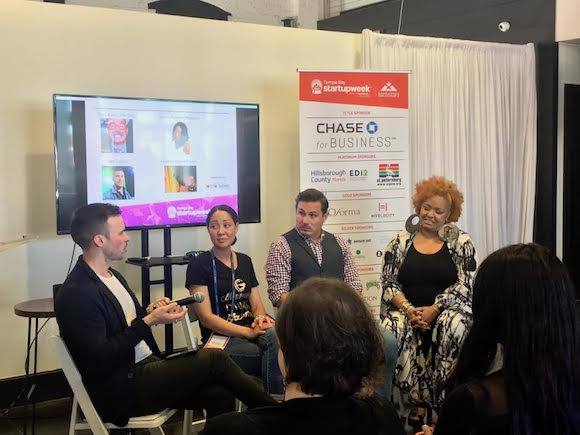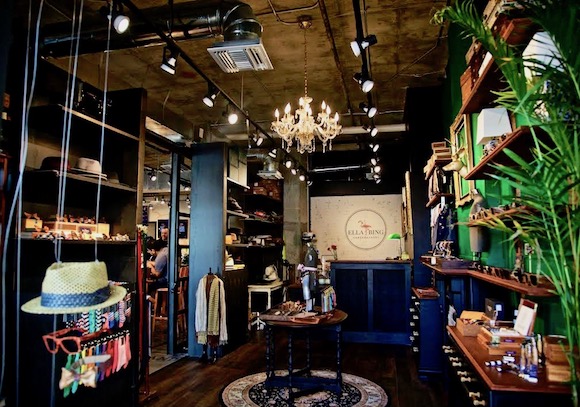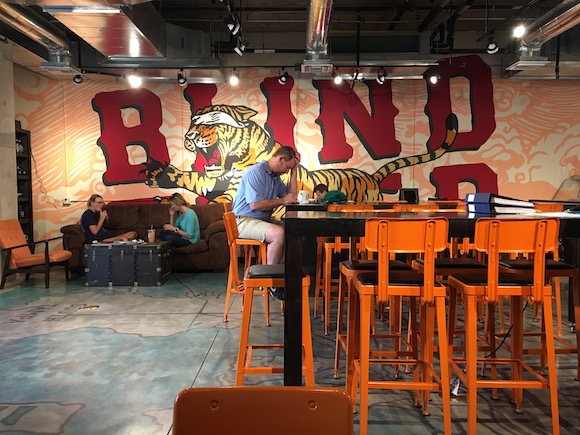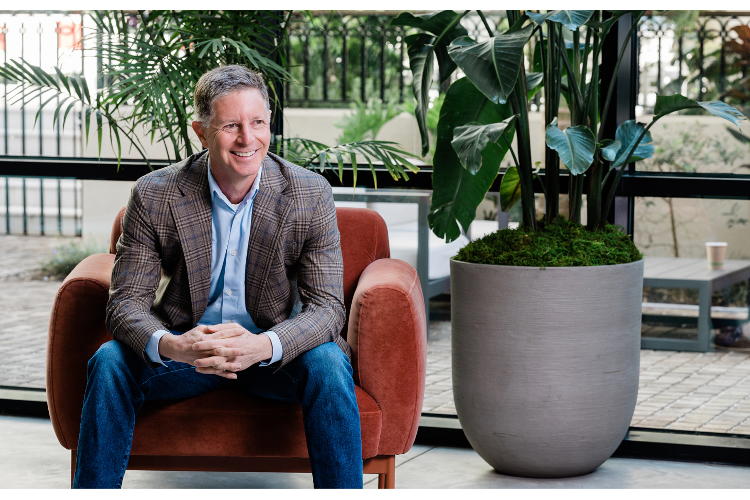Independent local retail: A key ingredient of urban quality of life
The Tampa Bay Area has many opportunities to invest in local retail, but are we smart enough to do it? Learn what more is needed from Retail Consultant Alex English.
Independent local retail is intrinsic to strong, desirable neighborhoods and cities. Look at any of our more stylish, more sophisticated peers (Nashville, Atlanta, Austin, Miami), and you’ll find pockets of independent, locally owned retail activity.
In the Tampa Bay Area, we lack a key element that could make our neighborhoods truly spectacular: retail spaces that are bursting with independent, local brands that epitomize who we are and allow us a bit of fantasy in what we want to be. And, that impress and delight tourists.
These sorts of retail stores are respected, from Dallas to Philly, because they marry the best of what is made locally with the best of what the world has to offer, resulting in a product selection that is relevant for the local market and climate, with a dash of worldly sophistication.
Independent local retailers have deep connections (a mutual interdependence) with the community, to a different degree than national chains. Since they can’t often compete on price (where they’ll always be undercut by online stores or scale chains), independent local retailers compete on service and selection, which is a far more gratifying experience than simply saving a few dollars.
From Lauren Sherman in The Business of Fashion: “Independent retailers just know their customer better. It’s often the owner who does the buying and the selling to customers.”
Thus, they (the owners of independent local retail) are likely to build a following, cultivate relationships, and perhaps most of all, engender trust and loyalty. And they make our city (and its neighborhoods), as a destination, or as a place to move, more appealing.
If we don’t support local merchants, champion them, and foster new ones, we risk losing them completely, primarily to online competition.
To take control of our region’s independent retail destiny, there are several pain points we can address.
What developers and landlords can do: Retail space
First, independent local retail needs affordable space, and perhaps some wiggle room to grow into long-term viability and profitability.
Unlike lululemon athletica, many local retailers cannot afford $70 per square foot for rent, at least at first. Give them temporary space, with more reasonable overheads. In time, those local merchants may find they become the magnet tenant that boosts desirability for adjacent spaces.
I have worked with several retailers who’ve tried pop-up shops, even organizing my own in Ybor City several years ago with a handful of local makers. These arrangements are good for everyone: Independent brands and retailers get exposure while landlords see activity in their spaces, which stimulates foot traffic.
In Manhattan, many landlords have priced out locally owned businesses in hopes of landing a Starbucks or national bank branch, actions which have often resulted in vacant storefronts that sit empty for months or years. Some have proposed taxing landlords that allow such vacancies rather than renting to local merchants on more reasonable terms.
Our problem is not so clear-cut. Ground level retail in new buildings has still been laughably slow to arrive even in dense urban neighborhoods like Tampa’s Channel District where there is undoubtedly a market hungry for shops within walking distance.
Down the road, landlords may find that it’s easier to attract a national chain willing to pay top dollar if the area feels vibrant, thanks to some thoughtfully chosen pop-up stores.
And no, ground-floor retail in the form of salons, bars, or urgent care clinics does not count as real retail that drives traffic and cross-pollination. Retail stores thrive in groups, so blocks and districts should (as much as possible) be considered holistically rather than space by space.
Unfortunately, many storefronts designed for retail that never arrived have been reconfigured as office space, a boon for landlords but a killer for neighborhood activity.
Several cities around the country are working on both the public and private sides to ensure commercial affordability for local retailers.
What city governments can do: Walkability
Too often, developers follow code requirements to build ground-level retail, but the public domain that abuts it (e.g. sidewalks, trees, shade, road configuration, crosswalks) is still unfriendly to pedestrians, and so no tenants opt to move in.
Because of this, retailers are forced to either congregate in “safe” strolling districts that are privately controlled, like Hyde Park Village or International Plaza, or they must work extra hard to drive destination traffic to their store, on streets better suited for cars to come and go than people on foot.
Many of our best commercial districts are still unpleasant to traverse on foot. South Tampa’s MacDill Avenue and Bay to Bay Boulevard and North Florida Avenue in Seminole Heights are all examples of retail and activity clusters with terrible pedestrian amenities.
This just encourages continued travel by car, and therefore, demand for parking, often in already-congested neighborhoods. It’s no wonder traffic has increased in some of our most in-demand areas, while walking activity has grown only marginally, often by necessity, not by choice.
Improving our corridors and retail clusters, shifting focus from cars to people, will do wonders to boost foot traffic and therefore, demand for retail space.
What shoppers can do: Emphasize local (vote with your dollars)
Local craft food, beer, and caffeine are trendy now. And for that, I am thankful.
Just a few years ago, the only local coffee alternatives were Buddy Brew and Kahwa. Today, there are several excellent independent local coffee brands, on which I spend far too much money.
Both Buddy Brew and TeBella Tea started in the 33606 zip code and now count multiple locations, including in Sarasota.
The same is true for local food brands. Ciccio Restaurant Group’s unique concepts were born here and have been successfully exported to other markets. I myself am a huge Fresh Kitchen fan. Somehow, even with behemoths like Whole Foods, local health food grocer Rollin’ Oats (in both St. Petersburg and Tampa) persists.
With all this emphasis on local things to eat and drink, why do we still head to the mall to shop, with mostly national brands to choose from, or order online? I’m aware that there are plenty of gaps in the local market, our choices are limited, and that everything we collectively demand can’t be made locally.
But you may be surprised at how many things are made in the region: from exquisite jewelry (Albisia) to evening gowns and dresses (Elizabeth Carson Racker), to everyday ready-to-wear (Victory Stitch). In Ybor City, Ink Fine Printing creates stationery and custom printed designs using intricate techniques like engraving, embossing, letterpress, and foil die stamping.
Local haberdasher Ella Bing sews and carves its fabric and wooden accessories by hand in Spring Hill. Well-respected leather goods brand Makr, sold at upscale stockists around the world, is made in nearby Winter Park.
Perhaps we would have more local makers if we really prioritized supporting them, like we do local craft beer, coffee/tea, and food.
These businesses survive thanks to a healthy online presence, which is an absolute necessity for small retailers in today’s landscape, augmenting any local business they get.
A new trend
Across the country, behavior is shifting. Consumers are scrutinizing their consumption footprint, and critiquing the origins of their purchases. They’re voting with their dollars, in favor of their local economy.
Will we be on the leading edge or will we trail?
You may not realize, but in pockets of The Tampa Bay Area, independent local retail is thriving, but only with the wide reach of an online store.
Platforms like Shopify and semi-seamless shipping arrangements mean businesses like SoHo’s The Paper Seahorse can bring the best stationery from Japan, Germany, and France to our doorstep, and support local artisans like Sagebrushed cards, St. Petersburg’s Pergamo Paper Goods, and St. Augustine’s M.C. Pressure.
Special orders are a common request of locals. Sales associates know most of them by name, remember their previous purchases, and know when to fire off a text to alert of an imminent shipment arrival.
But, half of The Paper Seahorse’s overall business is non-local online. And though the online presence has more scalability, the immersive in-store experience reinforces its virtual identity and gives distant shoppers a place to visit when they’re in town. A sort of “mother ship” for the store’s expansive digital footprint.
In Seminole Heights, The Disco Dolls Studio adjoins an apparel store with a hair salon to share clients and cross-pollinate, and also stocks products from local makers.
Maybe you desire higher-end designer goods from Europe?
In Westchase, Catherine Ansel’s Couture USA consignment and resale shop stocks impeccable second-hand Chanel suits and Hermès handbags. Her merchandise is sourced from around the world, sold online and in-store, and competes with the likes of TheRealReal in San Francisco and Fashionphile in Los Angeles.
St. Petersburg’s Twig boutique has been in business for eight years, with a loyal local and non-local following of clients who relish quality and comfort. Proprietor Elizabeth Burbage stocks brands from Italy and France, and says she doesn’t sell anything she wouldn’t buy and wear herself.
For years, even with the threat of competition from Amazon and the closure of chains like Borders, local booksellers have managed to find their stride: Inkwood Books, formerly of Hyde Park, recently moved to a new location in Tampa Heights. A recent Quartz article attributes their continued appeal as the 3 C’s: community, curation, and convening.
To keep and help grow retailers like these, and encourage more independent local retail entrepreneurs to launch their own businesses, we need:
- Developers and landlords to consider how to better manage vacant space and retail tenant mixes, giving preference and perhaps financial incentives to locally owned pop-up shops or temporary tenants, with an eye to how all elements work together.
- City planners to make pedestrian access a priority when reconfiguring streets and neighborhood associations to be clear about their desire to have more walkable districts.
- Local shoppers and consumers to make the extra effort to support local merchants, even if that means spending a few extra dollars or taking a few extra minutes.
Together, we can champion independent local retailers, support local makers and creators, and further crystallize our identity as a great retail destination with a uniquely Tampa Bay identity.
For more empirical reading, see The Institute for Local Self-Reliance’s Key Studies on Why Local Matters.
Alex English is a freelance brand management consultant. The Paper Seahorse and Uncommon Finds are among his clients.



















